‘The dame was dressed like a million dollars and had legs that would make permafrost steam. But Zak Flint, private eye, knew it was all smoke and mirrors. He had the scars to prove it…’
This is Hollywood’s version of the private investigator’s life: midnight assignations with sultry vamps, high-speed car chases, chisel-jawed guys packing heat. It sounds an attractive career option compared with trudging to the office every day, except investigators in the real world say the job is nothing like that. They talk about mundane-sounding stuff such as data retrieval, asset tracing and compliance.
And then there are the bad apples that bring the private investigation industry into disrepute. A spotlight was shone most brightly on their world two years ago when a private investigator was jailed for illegally hacking into the phone messages of royal staff. Gavin Robertson, a former Metropolitan Police detective superintendent, has no time for such operatives. Robertson founded Robertson & Co in 1998 to provide surveillance, claim validation, risk control and fraud investigation services to government departments, local authorities, the insurance and casino industries, and corporate clients. From day one he has insisted on an ethical but ‘lawfully audacious’ approach to investigation and surveillance. The approach has paid dividends – the company has grown over 11 years to a headcount of 53 surveillance agents, 67 investigators and 23 in-house investigation managers.
Robertson cares passionately about raising industry standards. He is consulting with the government on new laws to regulate the licensing of ‘investigators in the private sector’, as he calls them. There is a need for ‘strict compliance, transparency and accountability’, he says, particularly in those industries regulated by the Financial Services Authority.
Jo Pizzala, a partner at London and Leeds firm Plexus Law, regularly instructs private investigators on behalf of insurance company clients. The actions are usually personal injury claims where surveillance evidence is required to discover if a claim is fraudulent. The injuries in these cases would not be catastrophic ones where, for instance, amputation or brain damage had occurred; these are self-evident. They would be injuries that the client claimed were incapacitating but for which there was no objective proof.
Pizzala says: ‘In road traffic accident cases where soft tissue or whiplash injuries are alleged to have occurred you only know what the claimants choose to tell you. Are they really champion basketball players who are in constant pain, their lives wrecked? Are they really incapable of going back to work because they need care 10 hours a day? These claims can amount to £1m or more and need to be verified.’
There is occasionally a lighter side to her work. Pizzala tells the story of a dangerous sports instructor who claimed a neck injury had put him out of business. An investigator tracked him down to Norway and, in an act of bravery beyond the call of duty, allowed himself to be strapped to the claimant’s back for a parachute skydive from an aeroplane. ‘The surveillance guy screamed all the way down,’ says Pizzala, ‘but he still managed to get a photo of the claimant, uninjured and working in dangerous sports.’
On a more serious note, earlier this year Pizzala acted in a landmark case where, with the assistance of photographic evidence from a surveillance agent, a personal injury claimant was found in contempt of court for exaggerating the gravity of her injuries. She was ordered to pay her own £125,000 legal bill, a £2,500 fine for contempt and half the defendant insurance company’s considerable legal costs (See [2009] Gazette, 17 April, 1).
Not all private investigators carry out personal injury work. Neil Miller, a director of Commercial Security International (CSI), advises commercial organisations on fraud, counterfeiting and intellectual property theft, computer forensics, due diligence, and the profiling, tracing and recovery of assets. He is a member of the Association of Certified Fraud Examiners, Institute of Risk Management, Anti-Counterfeiting Group and London Fraud Forum.
Miller, like Robertson, has no patience with investigators who break the law. ‘You can find all sorts of information in the public domain,’ he says. ‘It’s amazing what people say on Facebook, for example. Data that’s obtained illegally is inadmissible in court – so why spend the time and money?’
CSI has recovered £12m of counterfeit goods this year. ‘Counterfeiting is not a victimless crime,’ Miller says. ‘The proceeds are used to fund organised crime, such as people trafficking, drug smuggling and the illegal arms trade. Sometimes the victims are directly affected, as when six babies died in China from counterfeit milk tainted with melamine. You can even buy counterfeit cars and aeroplane parts, which haven’t been through the same quality checks as the authentic items. Cars could crash and planes could fall out of the sky.’
International investigation company Nardello & Co focuses on corporate clients and specialises in commercial investigations, due diligence and litigation support worldwide. Managing director Michael Walsh is a former detective in the Metropolitan Police fraud squad and the Serious Fraud Office, and has investigated white-collar crime in Africa, the Middle East, the Far East and the former Soviet Union and has led multi-jurisdictional investigations from Nardello’s London base for 10 years.
Walsh deplores the stereotypical belief that private investigators at the ‘grubby end of the industry’ are somehow permitted to follow unethical routes. ‘There are creative ways of getting to the answer without breaking the law,’ he says.
Information gleaned in this way may be used in litigation support where parties have fallen out. The client might need something to show the other party in a bad light, weakening the opponent’s negotiating position and casting doubt on his testimony.
‘The devil is in the detail,’ says Walsh. ‘When you begin sifting through the data you’re at first uncertain and bewildered by its sheer volume. But with cross-referencing comes clarity and decisions.’
He has an important warning about unethical operatives: ‘Be careful what you ask them for – you might get it.’
Another private investigator stereotype is the seedy individual who hides in hotel bedroom wardrobes only to leap out to photograph an adulterous couple in flagrante delicto.
Gillian Rivers, a family law partner at London firm Collyer Bristow, says: ‘In reality, we use private investigators mostly for serving documents. It’s usually the client who insists on surveillance and they arrange it independently. One client spent £30,000 on tailing someone across the UK and the US. Unfortunately, the evidence was inadmissible in court.’
Michelle Kolapo, a senior solicitor in the family law department of London firm TV Edwards, says divorcing clients have wasted money on hiring investigators to find assets that their estranged spouse has, allegedly, hidden away. ‘There is already a mechanism in place to find out where the money has gone,’ she says. ‘It’s called full and frank disclosure.’
Zak Flint’s lips crease into a cruel smile. Company House. Facebook. The electoral register. The information was out there for all to see. He glances at the scratched face of his Rolex. There was just time to catch the 18:01 back home to the wife and kids in Bromley…

Gazette stakeout
We had eyeball, the bullet camera was primed and another agent was watching our backs from 200 metres away. The instructions were clear: record all deliveries to the subject’s home. No heroics, no independent action, just follow the brief. We weren’t there to provide proof, only evidence.
This wasn’t the mean streets of Baltimore. We were in a London suburb gathering evidence for an insurance company. It suspected that our subject’s personal injury claim, for tens of thousands of pounds, was fraudulent. We were there to help see if those suspicions bore fruit.
It was the Gazette’s first stakeout and I was with Coral Main, one of 53 surveillance agents working for surveillance, claim validation, risk control and fraud investigation specialists, Robertson & Co.
Main was in the Metropolitan Police and there’s little she doesn’t know about covert surveillance. She has customised her handbag to hold a concealed camera that takes photographs through a hole beneath the handle – next time you see a woman rummaging through her handbag, remember to smile for the camera.
Have you spotted that car parked facing away from you? The guy is not vacantly staring through the windscreen. He’s actually eyeballing you in his rear view mirror and taking photos with a camera built into the headrest of his seat. And how about the bloke with the ballpoint pen and clipboard making notes about street lamps or manhole covers? There’s a camera in that pen. Maybe.
And in case you’re wondering, a bullet camera is a tiny camera, often bullet-shaped, of the kind sometimes worn in helmets by sportspeople. They can also be used for surveillance. One might be watching you right now.
Main says surveillance is not all about hanging around waiting for something to happen. Sometimes you have to get out of the car and tail subjects on foot. ‘Don’t ever make eye contact with the subjects,’ she says, ‘because then they will remember you. Choose their clothes, shoes or the way they walk and follow that. For obvious reasons, never follow them down a cul-de-sac. And if the subject starts doing ‘recips’, then you know you have either already been spotted or the subject is checking for a tail.’
‘Recips’, in the argot of surveillance, are ‘reciprocal routes’. They are when, for example, the subject walks from A to B and then retraces his or her footsteps exactly from B to A. Anyone doing the same pointless exercise is clearly tailing the subject.
Of course, anyone checking for a shadow in this way has, in Main’s phrase, a ‘villainous background’ and something to hide. But then that’s probably why you’re there in the first place.
Many of the same strictures apply to tailing someone in a car – in particular the one about not following a subject down a cul-de-sac.
Preparation is key, Mains says. You should get to the stakeout 20 minutes early and go for a walk to get a feel for the area. Are there alleyways that the subject could duck into? Anything else unusual, like road closures or diversions? Check for sight lines. What can you see from where? And what can the subject see from an upstairs bedroom window, for instance? Could the subject be watching you? Check in with the local police before a vigilant neighbour reports you. Your attempts at covert surveillance will be scuppered when a squad car, sirens blaring, rushes to find out why you’re hanging around on a quiet suburban street.
Main has seen most things by now. There was the man so badly injured in an accident that his wife had to help him into the car. He could barely walk, work was out of the question and his wife needed to drive him everywhere. Main followed them four miles down the road, where the car stopped and they changed drivers. Later, the man was captured on video riding a bicycle. He didn’t get his several hundreds of thousands of pounds of compensation.
And then there was the woman left paralysed, deaf and mute by a road traffic accident, who was claiming £500,000 compensation – until she was photographed chatting on her mobile phone in Woolworths on the last day of the sales.
‘For the biggest claims,’ says Main, ‘the insurance companies are still watching years later – when the claimant thinks they have given up.’ She shakes her head. ‘I don’t understand why the insurance companies don’t just sue them for perjury and attempted fraud.’
She has a point.

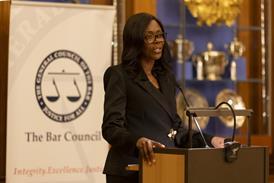


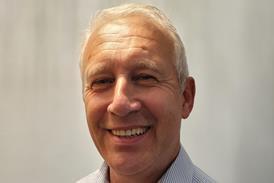


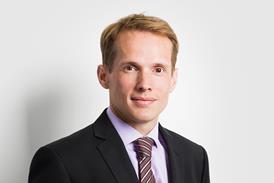






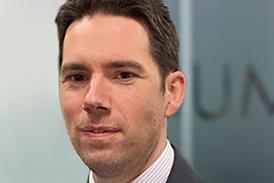


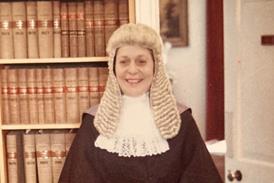


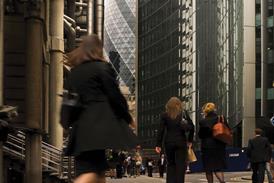






No comments yet